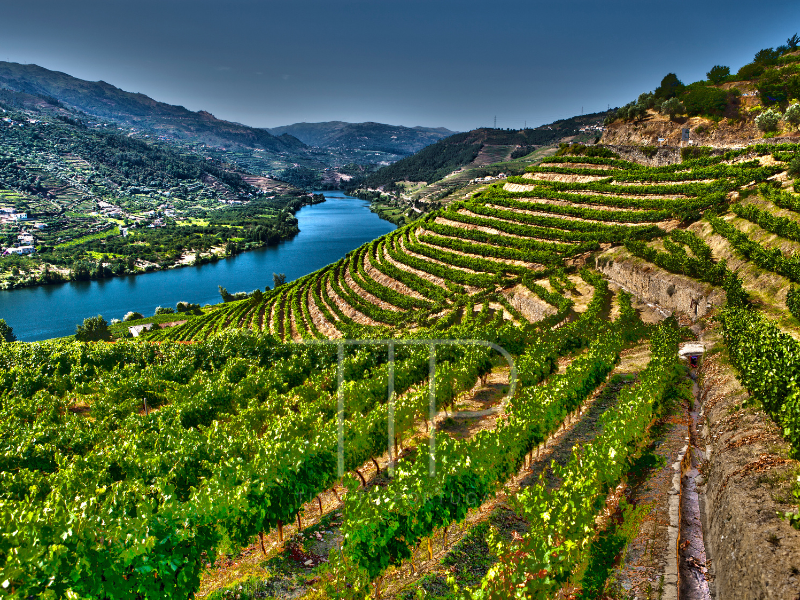Tasting wine is tasting history. Discover the past of some of the Douro’s most important wineries
Wine is not just a drink. What we taste always has a story behind it that reflects and reveals all the characteristics of both the land and the family that produces the labels. I took a five-day trip to the Douro region, considered to be one of the cradles in the production of Portugal’s great labels, to understand and get to know the whole process before these icons are in the bottle.
The tour began at the Casa Vilacetinho winery, which has been in existence since 1790 and was one of the first producers in the Vinho Verde region. In fact, in 1957, the British chose labels from the portfolio to serve to Queen Elizabeth II on her visit to Portugal. João Miguel Maia, the director, winemaker and head of the family generation, is responsible for offering the market 14 different wines, some of which have won important awards from Wine Enthusiast, one of the most respected international guides to wine trends and ratings. And I dare say that the best Vinho Verde I have tasted to date is Vilacetinho.
Then I went to Arribas do Douro, which, as well as producing a rosé voted the best of 2023 by the Portuguese press, has 11 types of wine and five styles of Port in its portfolio – they are already producing four more labels that will be launched by 2025, a Ruby, a Tawny 20 years, 30 years and 40 years. The director of the brand, who leads the family project, Miguel Massa, showed that there is a lot of hard work involved in producing, labeling, placing on the market and exporting wines.
The next stop was Quinta dos Castelares, one of the great names in organic wines in Portugal, which has collected more than 40 medals in international competitions, with a portfolio of almost 30 wines, prepared by Pedro Miguel Ferreira Martins and accompanied by the great creator and owner of the whole project, Manoel Joaquim Caldeira.
The family works closely together, from the winemaker’s young children, aged 11 and five, to his wife Sandra Caldeira, who also runs the operation. I can say that in two days together, we formed a big family and I felt at home being treated with such affection. I also had a lesson in wine and the importance of cultivation, soil preservation and the choice of grapes for production.
Related article: It is one of the most beautiful train journeys in the world and it passes
Organic production
Castelares wines are made from organically grown grapes. This type of process is carried out without the use of chemical products, in revitalized soils enriched only with organic matter. It’s worth noting that in Brazil there is still a lot of room for growth in this market, although in recent years organic wine has evolved positively in terms of production and consumption due to greater concern and awareness of the environment and health.
The highlight of this visit was tasting a wine that is on my list of the best, called Bicho de Seda, vintage 2018. We’re talking about a beautiful blend of the Sousão, Touriga Franca and Touriga Nacional grape varieties, aged for 24 months in French oak barrels.
The tour then moved on to the Quinta Holminhos boutique winery, where the producer and winemaker himself, Victor Teixeira, welcomed me with a breathtaking Portuguese feast, produced by himself, for us to enjoy his five exclusive wines. I also learned about his production of Portuguese cachaça, made from the skins of grapes left over after producing wine.
And finally, I ended the trip by the waters of the River Douro, where I visited the Costa Boal winery project, run by Antônio Costa Boal. I had the chance to include in my life’s repertoire the tasting of Port wines over 100 years old, classified as Very Very Old. I also visited Boal’s century-old vineyards and had my two favorite red wines of the trip: the numbered bottle Palácio de Tavoras, made from the Alicante Bouschet grape, vintage 2019. And the Grand Reserva Homenagem, vintage 2015, made with the classic Portuguese grape varieties, Touriga Nacional, Touriga Franca, Tinto Cão and Sousão.
This whole trip showed me that wine is much more than a drink made from grapes. It tells the story of the soil, the region and a centuries-old family tradition.
Credit @ exame

